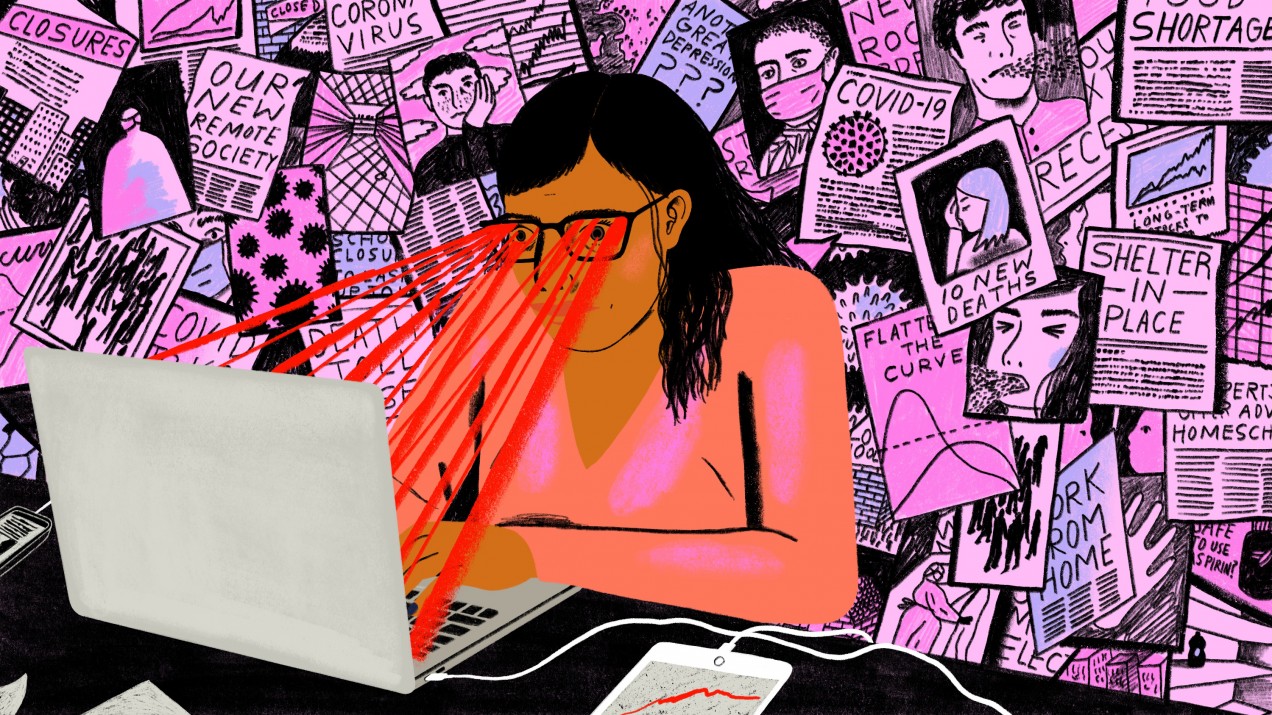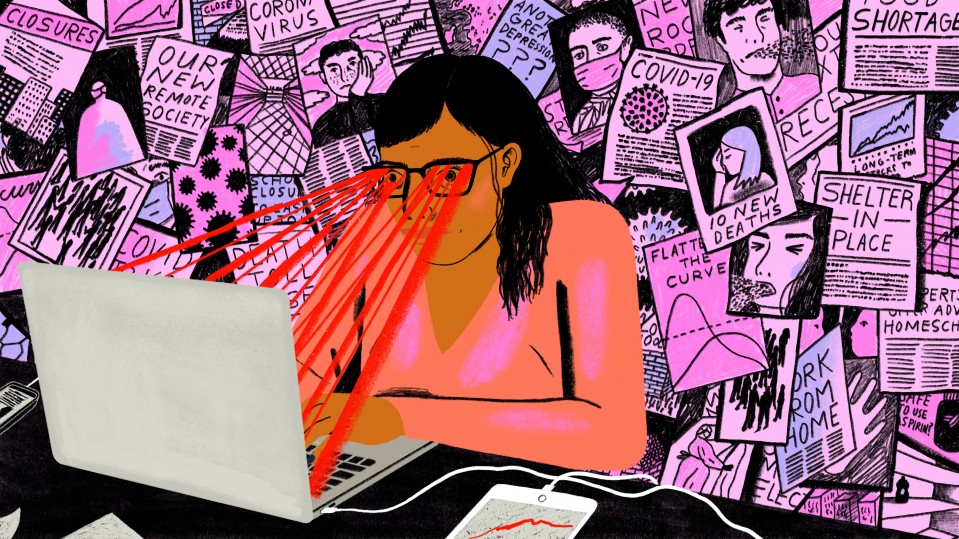

Biotechnology
Your biggest questions about coronavirus, answered
Battling the spread of Covid-19 is going to be a long-haul effort. Here’s what you asked us.

The coronavirus pandemic has only just begun. Everyone is trying to wrap their heads around what they need to know to protect themselves and their communities, and prepare for what’s next. Here are answers to some of the biggest questions our readers have about the outbreak, which we collected in a survey sent out through social media and other avenues.
This post will stay live with more questions added to it (and, hopefully, some answers) as the outbreak progresses. Get in touch through this Google Form if you have any more questions, and we will do our best to answer them. This post is part of our coverage of the coronavirus/Covid-19 outbreak, all of which is available for free. You can also sign up for our coronavirus newsletter.
Does Covid-19 really cause a loss of smell and taste?
On March 20, scientists with ENT UK, a professional organization representing ear, nose and throat doctors, reported that the loss of smell and taste seemed to be a symptom of coronavirus infections, based on anecdotal reports from colleagues around the world. The authors wrote that it seemed 30 percent of confirmed Covid-19 cases in South Korea experienced anosmia (loss of smell) “as their major presenting symptom in otherwise mild cases.” In Germany, anosmia was reported by two-thirds of Covid-19 patients.
And the truth is, it’s not entirely surprising. Post-viral anosmia is the cause of 40 percent of all cases where someone loses their sense of smell. The ENT UK statement says previously studied coronaviruses cause anosmia in 10 to 15 percent of all infections.
Although it’s a normal part of many viral infections, the reason anosmia is a concern for Covid-19 is because it’s often presenting itself in very mild infections, in the absence of more severe symptoms like fever, coughing and shortness of breath. These are people who aren’t really presenting as ill in any significant way, so they may not be self-isolating themselves as they should.
But before we jump to conclusions, we need to wait for published data that shows without a doubt anosmia is a symptom of Covid-19. If you’re experiencing a loss of smell and taste these days, it’s not a definitive sign that you have coronavirus. But it might be a sign that you should be extra vigilant about self-isolating, and perhaps seek out a Covid-19 test (if it’s available).
How does this end?
Nobody knows. Epidemiologists at Imperial College London suggest we could see a worst-case scenario of 264 million Americans infected and 2.2 million dead. We also don’t know some important things about the virus, including how many asymptomatic cases there are, making it difficult to plan.
After the outbreak in Wuhan became public in late December, Chinese authorities began enforcing strict measures on travel and activity designed to stop the spread of the virus as aggressively as possible. It seems to be working: China reported no new cases in Wuhan on March 15. Strict measures are said to have helped reduce the number of new infections in hard-hit places like South Korea as well.
Unfortunately, for every South Korea or Singapore, there’s a case like Italy, which did not handle the initial outbreak well and is now reeling from the effects, with the virus spreading incredibly fast and taxing health-care systems well beyond capacity.
That’s part of the reason we don’t know how this will end—we don’t yet have a system of containing the virus that is universally adhered to around the world. Just last week, the UK was suggesting it would forgo strict mandates on social distancing and isolation, and instead take a slow approach that would allow over 60% of its population to become infected in order to encourage herd immunity. The about-face on this policy may have come too late.
The pandemic could reach a natural end when it finally spreads to nearly every part of the world and no longer has anywhere else to go. But that would leave an unthinkable number of people dead. We could see a combination of various antiviral treatments being fast-tracked sooner to help treat cases, and continued efforts to help slow the spread and “flatten the curve” (more on that below). But the solution that saves the most lives is a vaccine that provides immunity. That will probably take another 18 months to develop, and there’s no telling yet how effective it might be.
How is a quarantine supposed to work?
The idea behind quarantine is to isolate people who are or may be infected, in order to prevent them from transmitting the illness to others, or to sequester healthy people and make sure they stay healthy. If you restrict someone’s movements beyond the incubation period of the infection, you can isolate new cases as they come up, prevent the spread of infection, and treat those who fall sick.
There’s some elasticity in what qualifies as a quarantine. Not being allowed to leave home, or being kept in isolation within a hospital, are pretty strict forms. Sometimes quarantines are not mandatory, but self-imposed by individuals who think they might be sick and doing the right thing by waiting out the incubation period (or recovering from illness) before going out in public again.
Quarantines are only one of a list of actions that can be taken to increase social distancing and help “flatten the curve”—limit the number of cases at any one time, so the peak caseload is much easier for health-care systems to manage.
How fast can coronavirus mutate?
Mutations are natural to every gene on the planet, including those that are part of viruses. In fact, we can study these mutations in the coronavirus genome itself to see whether outbreaks in a single country are related.
So far, it appears the rate of mutation in coronavirus is less than half the rate of eight to 10 times per month for influenza. And more specific numbers will come as researchers spend more time studying the virus.
It’s harder to say how specifically we can use this information. Multiple genetic mutations are required for a virus to evolve into something more virulent or threatening. Current research suggests the two major strains of coronavirus affecting humans differ by just 0.007%. There’s no reason to think a vaccine developed for one won’t work against the other.
If you survive coronavirus once, can you be reinfected?
There are a few reports so far that individuals who’ve contracted the disease and been cleared of the virus have tested positive again. So far these seem to be extremely rare —in China they seem to account for less than 0.2% of all infections. Other literature shows that scientists have observed persistent infections of coronaviruses in animals.
We still don’t know enough about the virus or about how immunity develops after infection to say much about how this might work. Thus far it seems rare enough not to be alarmed about. And most scientists seem to think errors more likely explain why some recovered patients are testing positive.
What should we expect as spring arrives? Will the warm weather hurt or help our efforts to stop the virus?
A big question scientists are trying to answer is whether coronavirus peaks during the winter and ebbs during the summer, like the flu. If there’s a seasonal aspect to the virus, then it also means we have to plan for levels of infection in the Northern Hemisphere to rise rapidly as autumn sets in.
The answer is unclear. A new study that hasn’t been peer-reviewed yet suggests that 95% of positive cases globally have thus far occurred between -2 and 10 °C, which could indicate greater transmission in cooler climates.
The prospect of seasonality is already influencing how some countries are approaching the problem. The UK’s maligned former strategy to encourage herd immunity assumed in part that the country needed to plan for keeping its health-care system from being overwhelmed by peak caseloads in winter.
Yet so many different variables can influence transmission. We’ve only known about the virus for a few months and have yet to actually observe what will happen as the seasons change. The virus may just barrel through the summer unimpeded, or it may exhibit stranger behavior in the winter. We need more data to make strong predictions.
How long are people contagious when they are infected?
The answer depends on the study you read. A recent study by German scientists suggests that people who test positive are most contagious before they’ve started exhibiting symptoms and during the first week that symptoms show up. Symptoms can appear anywhere between two and 14 days after infection. On the plus side, the same study shows that after about eight to 10 days of symptoms, patients were no longer infectious. This seems to show that though the disease is pretty contagious at the onset, the body gets rid of the virus quickly once antibody production turns on (which is typically within six to 12 days).
Yet another study, however, suggests the virus can endure in the body for a median of 20 days after infection, and as long as 37 days in some cases.
The rule of thumb being promoted so far is to remain quarantined for 14 days from the moment you develop symptoms.
What are the core health and medical tools, technologies, and resources we need to handle thousands or tens of thousands of cases in cities and towns around the US? Why haven’t we scaled up production?
One of the biggest concerns facing health-care systems down the road is the availability of medical ventilators for hospitalized patients. Covid-19 is a respiratory disease, and for those severely affected, it's critical to be able to provide oxygen or mechanical help with breathing. The US has only 160,000 ventilators available at the moment—a fraction of what we may need if the virus hits harder. Current business models are just not designed to incentivize this level of manufacturing, though there are efforts to change that right now.
But by far, the biggest immediate need is testing kits. “We have a simple message for all countries: test, test, test,” WHO director general Tedros Adhanom Ghebreyesus said in a press briefing Monday. Unfortunately, the US simply hasn’t been testing enough people, and it’s almost a certainty there are many more infections than cases that have been confirmed. Production is ramping up now thanks to new efforts by private and academic labs, but might be too late.
Down the road, we’ll also need to figure out how to scale up manufacturing of antiviral treatments or even a viable vaccine.